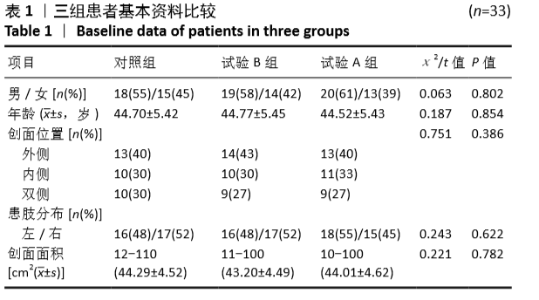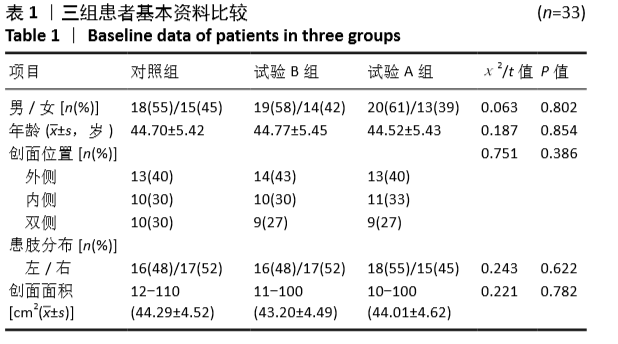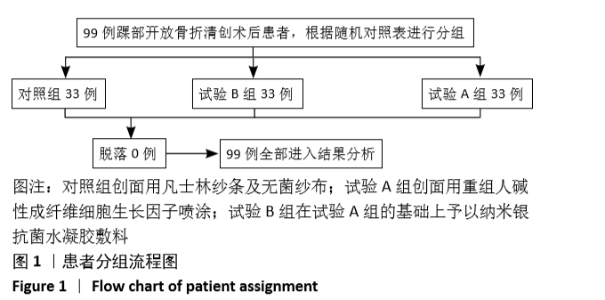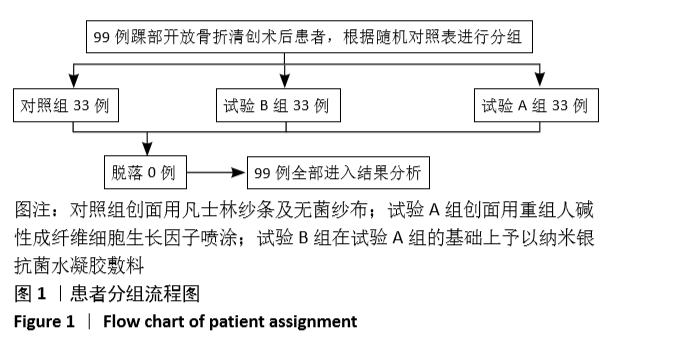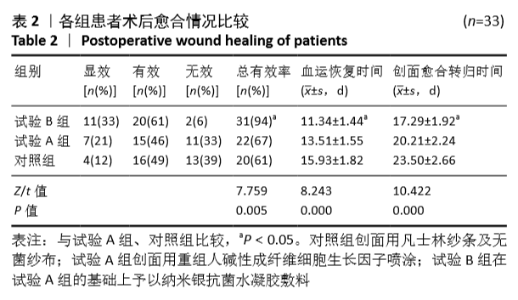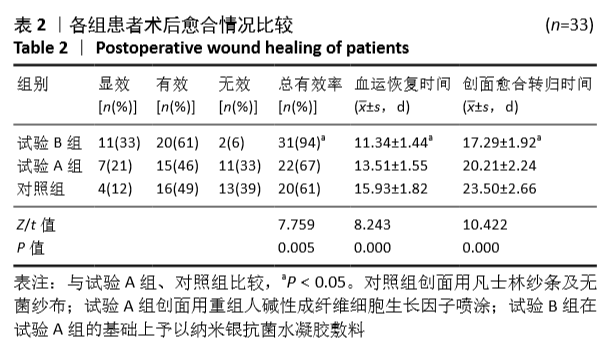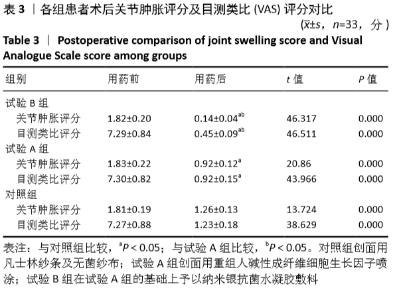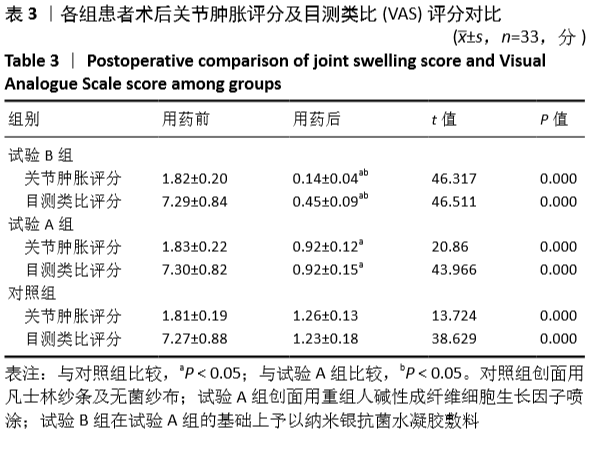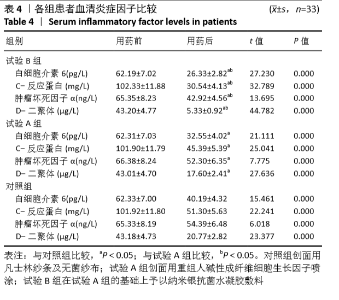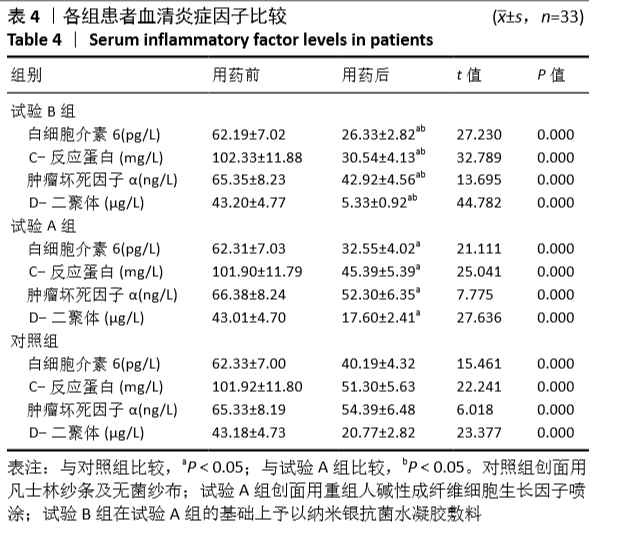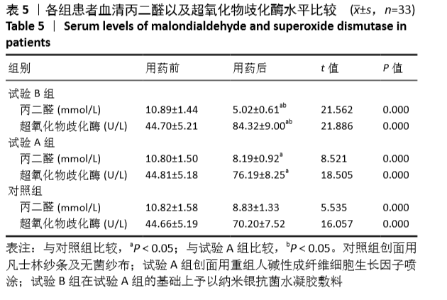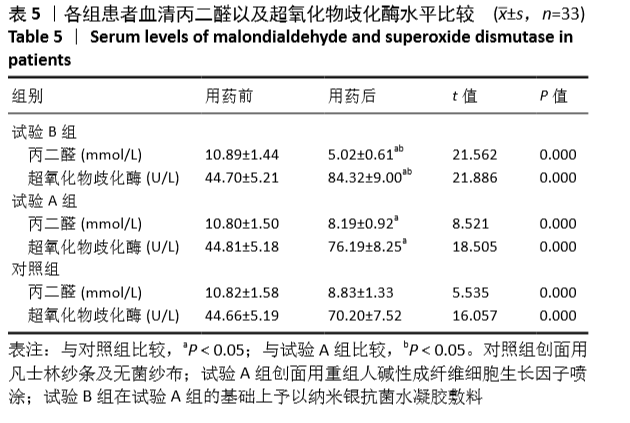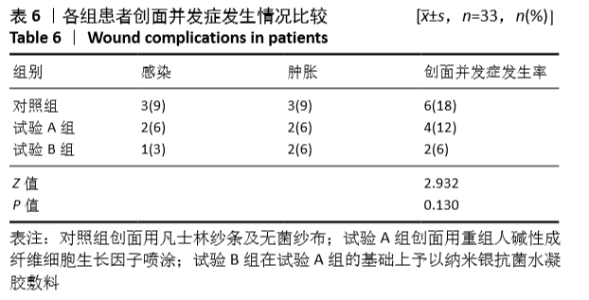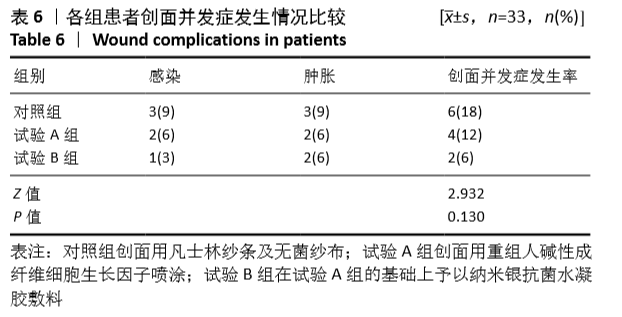[1] LAMBERT LA, FALCONER L, MASON L. Ankle stability in ankle fracture. J Clin Orthop Trauma. 2020;11(3):375-379.
[2] RIBEIRO DE ÁVILA V, BENTO T, GOMES W, et al. Functional Outcomes and Quality of Life After Ankle Fracture Surgically Treated: A Systematic Review. J Sport Rehabil. 2018;27(3):274-283.
[3] ZHAO G, USUI ML, LIPPMAN SI, et al. Biofilms and inflammation in chronic wounds. Adv Wound Care. 2014;2(7):389-400
[4] SHAO J, ZHANG H, YIN B,et al. Risk factors for surgical site infection following operative treatment of ankle fractures: A systematic review and meta-analysis. Int J Surg. 2018;56:124-132.
[5] 李庭,孙志坚,柴益民,等.ERAS理念下踝关节骨折诊疗方案优化的专家共识[J].中华骨与关节外科杂志,2019,12(1):3-12.
[6] ROMANELLI M,DINI V,BERTONE MS. Randomized comparison of OASIS wound matrix versus moist wound dressing in the treatment of difficult-to-heal wounds of mixed arterial/venous etiology. Adv Skin Wound Care. 2010;23(1):34-38.
[7] 蒋琪霞,刘玉秀,李晓华,等.177例慢性伤口应用纳米银敷料的效果研究[J].中华护理学杂志,2015,50(8):932-936.
[8] KIRAN D, NICHOLAS L. Hydrogel dressings and their application in burn wound care. Br J Community Nurs. 2018;23(Sup9):S24-S27.
[9] 边晖,尚文静,肖东.银离子敷料和水凝胶敷料进行治疗的Ⅱ度烧伤患者实施系统化护理的临床效果[J].中国现代药物应用,2017,11(5):167-168.
[10] 何婷婷,张晨,景士兵,等.不同剂量外用重组人碱性成纤维细胞生长因子对皮肤和肌肉的影响[J].中华医学美学美容杂志,2018,2(2):130-134.
[11] 胥少汀,葛宝丰,徐印坎. 实用骨科学[M].3版.北京:人民军医出版社, 2005:28-29.
[12] METSEMAKERS WJ, MORGENSTERN M, MCNALLY MA, et al. Fracture-related infection: a consensus on definition from an international expert group. Injury. 2018;49(3):505-510.
[13] 孙传兴. 临床疾病诊断依据治愈好转标准[M].2版.北京:人民军医出版社,1998:44-45.
[14] 余斌,张英泽,唐佩福,等.中国骨折内固定术后感染诊断与治疗专家共识(2018版)[J].中华创伤骨科杂志,2008,20(11):929-936.
[15] 王满宜.足与踝骨折的几个问题[J].中华创伤骨科杂志,2006,8(5):401-403.
[16] THOMAS G,WHALLEY H,MODI C. Early mobilization of operatively fixed ankle fractures: a systematic review. Foot Ankle Int. 2009;30(7):666-674.
[17] 邹剑,章暐,张长青.踝关节骨折及骨折术后产生软组织并发症的高危因素[J].上海医学,2007,30(8):572-575.
[18] 梁羽,方跃,姚相雨,等.踝关节骨折的治疗现状及进展[J].华西医学, 2014,29(1):172-178.
[19] 施忠民.踝关节陈旧性骨折的诊断与治疗[J].中华创伤杂志,2015,31(2): 100-103.
[20] Worster B, Zawora MQ, Hsieh C. Common questions about wound care.American Family Physician. 2015;91(2):86-92.
[21] 王传林. 急诊开放性伤口清创缝合术专家共识[J].中华医学杂志,2020, 100(21):1605-1610.
[22] TREADWELL T, BARANOSKI S, AYELLO EA. Wound care essentials practice principles.3rd ed. Pennsylvania: Lippincott Williams&Wilkins. 2012;447-460,491.
[23] 王彤华,周雄丽,谢利勤,等.湿性敷料在慢性伤口临床护理中的应用进展[J].中华现代护理杂志,2016,22(15):2210-2212.
[24] LU H, YUAN L, YU X, et al. Recent advances of on-demand dissolution of hydrogel dressings. Burns Trauma. 2018;6(4):1-13.
[25] 宋文山,王园园,杜芬,等.鱼皮胶原蛋白-壳聚糖复合海藻酸盐水凝胶敷料对烧烫伤创面的促愈合作用[J].中国海洋药物,2018,38(3):33-34.
[26] CARTER MJ, TINGLEY-KELLEY K, WARRINER RA. Silver treatments and silver-impregnated dressings for the healing of leg wounds and ulcers:A systematic review and meta-analysis. J Am Acad Dermatol. 2010;63(4):668-679.
[27] GUNASEKARAN T, NIGUSSE T, DHANARAJU MD. Silver Nanopartocles as real topical bullets for wound healing. J Am Coll Clin Wound Special. 2012;3(4):82-96.
[28] Ge LP, Li QT, Wang M, et al. Nanosilver particles in medical applications: synthesis, performance, and toxicity. Int J Nanomed. 2014;9(4):2399-2407.
[29] ADHYA A, BAIN J, RAY O, et al. Healing of burn wounds by topical treatment:A randomized controlled comparison between silver sulfadiazine and nano-crystalline silver. J Basic Clin Pharm. 2015;6(1):29-35.
[30] 邱燕森,袁之木,李瑞瑞,等. 头皮裂伤清创术后运用银离子抗菌敷料治疗创面感染的效果[J].中西医结合护理(中英文),2019,5(7):137-138.
[31] 汲广成,乔晋琳,李金牛,等. 成纤维细胞与软组织损伤修复[J].中华中医药学刊,2014,32(7):1569-1572.
[32] 刘新红,李铭杰.重组牛碱性成纤维细胞生长因子联合高压氧对肛肠病术后创面愈合的影响[J].医学信息,2020,33(14):151-152.
[33] 费益,胡哲清,应锡玫,等.碱性成纤维细胞生长因子对压疮愈合的影响[J].浙江创伤外科,2019,24(5):937-939.
[34] 蔡健.碱性成纤维细胞生长因子对腹部创面愈合影响的临床研究[J].中国现代普通外科进展,2019,22(4):331-332+336.
[35] 谢思圳,唐乾利.碱性成纤维细胞生长因子对创面愈合作用的研究进展[J].右江民族医学院学报,2017,39(4):307-309.
[36] 曾勇,李小英,彭媛,等.碱性成纤维细胞生长因子联合纳米银烧烫伤贴治疗伤期残余创面的疗效观察[J].中国美容医学,2019,28(5):94-97.
[37] JIANG N, QIN CH, HOU YL, et al. Serum TNF-α, erythrocyte sedimentation rate and IL-6 are more valuable biomarkers for assisted diagnosis of extremity chronic osteomyelitis. Biomark Med. 2017;11(8):597-605.
[38] 刘莉娜,杨志刚,陈静,等.踝关节骨折患者术后医院感染的影响因素与围术期血浆D-二聚体和CRP及ESR的临床意义[J].中华医院感染学杂志, 2020,30(20):3130-3133.
[39] 刘维统,杨景帆.康复训练与舒筋活血洗剂联用对踝关节骨折术后关节功能恢复及炎性因子的影响[J].世界中医药,2017,12(6):1320-1323.
[40] 王海涛, 刘剑, 徐英智. 复位经皮螺钉内固定术对踝关节骨折患者的疗效及患者关节功能与炎性因子水平的影响[J].国际医药卫生导报,2019, 25(15):2518-2521.
[41] STUCKEN C, OLSZEWSKI DC, CREEVY WR, et al. Preoperative diagnosis of infection in patients with nonunions. J Bone Joint Surg Am. 2013;95(15):1409-1412.
[42] 孙峰,远青钊,王在义.感染对肺栓塞患者D-二聚体临界值的影响研究[J].中国全科医学,2016,19(35):4333-4337.
[43] KHANNA P, KAUR K, GUPTA AK. Salicylic acid induces differential antioxidant response in spring maize under high temperature stress.Indian J Exp Biol. 2016; 54(6):386-393.
[44] 刘宏超,徐公平,徐文弟.开放性骨折后T淋巴细胞变化的实验研究[J].哈尔滨医科大学学报,2001,35(3):176-177.
[45] 付常国. 抗氧自由基防治骨筋膜室综合征23例[J].中国骨伤,2006,19(1): 20-21.
[46] MAO H, XU G. Protective effect and mechanism of microRNA146a on ankle fracture. Exp Ther Med. 2020;20(5):3.
|
